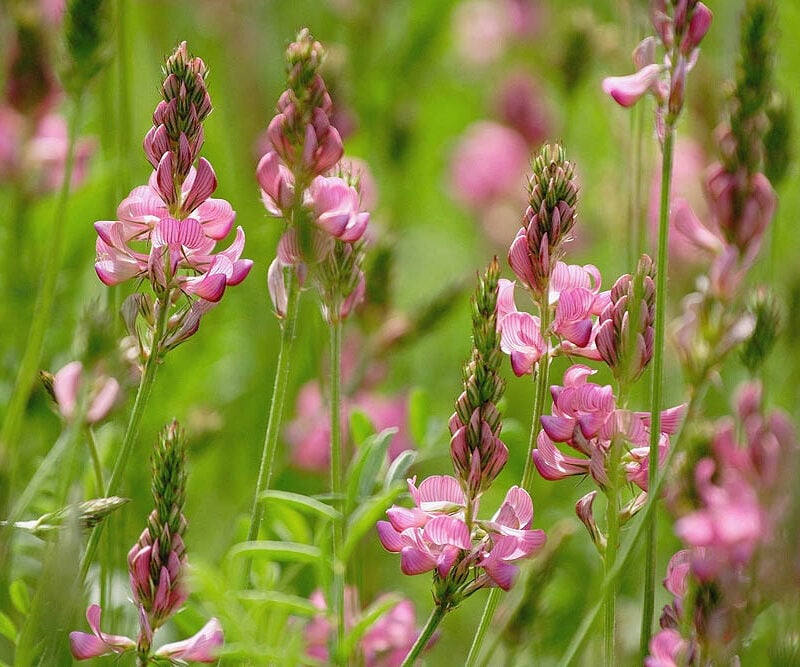Description
Sainfoin is a bold erect perennial legume with stalked spikes of bright pink flowers. Its leafy pinnate foliage initially form dense crowns before shooting up to flower in summer on numerous leafy shoots up to 60cm in height. The English term sainfoin is derived from the French ‘sain foin’, meaning ‘healthy hay’; Onobrychis viciifolia means ‘donkey’s favourite fodder’.
Habitat Information
Sainfoin is a plant most at home on dry, free-draining chalk and limestone soils. In Britain it grows wild on chalk grassland in southern England such as Salisbury Plain where it may be native. In other places it is considered a relic of past cultivation. It has been grown since the 17th century on chalklands as a high value specialist fodder crop, for example for horses. Its use in agriculture declined by the 1950’s, but there has been a resurgence in interest in it as a crop in recent years.
Growing Information
Sainfoin is best sown on to a well-prepared seed bed in good growing conditions in spring or early summer. Its large seed usually supplied ‘in the cosh’ (still contained within the dried legume pods – as sidebar photo x 7) benefits from covering by raking or harrowing after sowing if sown alone. If sown with other small seeds which should not be covered, just roll well after sowing.
Sainfoin has a long flowering period and is a valuable pollen and nectar resource.
The value of sainfoin as a forage legume has long been recognised (sainfoin meaning ‘healthy hay’). On deep free draining chalky soils, it can produce good yields of fodder hay or silage. Its feed value is higher than grass as it is highly palatable and rich in protein. Sainfoin also contain certain tannins which help prevent bloat, are a natural wormer and help animals digest proteins more efficiently.
Sainfoin is potentially a long-lived plant, but is sensitive to competition from other plants, and to heavy grazing. For these reasons, when grown as crop, it is usually sown alone or with a few less competitive grasses, not as part of a grazing mix. As a fodder crop, it is usually grown and cut for hay or silage, and if grazed with livestock, only very leniently.
Sainfoin fixes nitrogen from the air and has a lower phosphate requirement than many other clovers and legumes so has a useful role as a soil improver and for green cover on poor chalky or alkaline soils.
Sowing Rate
If sowing alone sow at 10g/m2 (100kg/ha)

